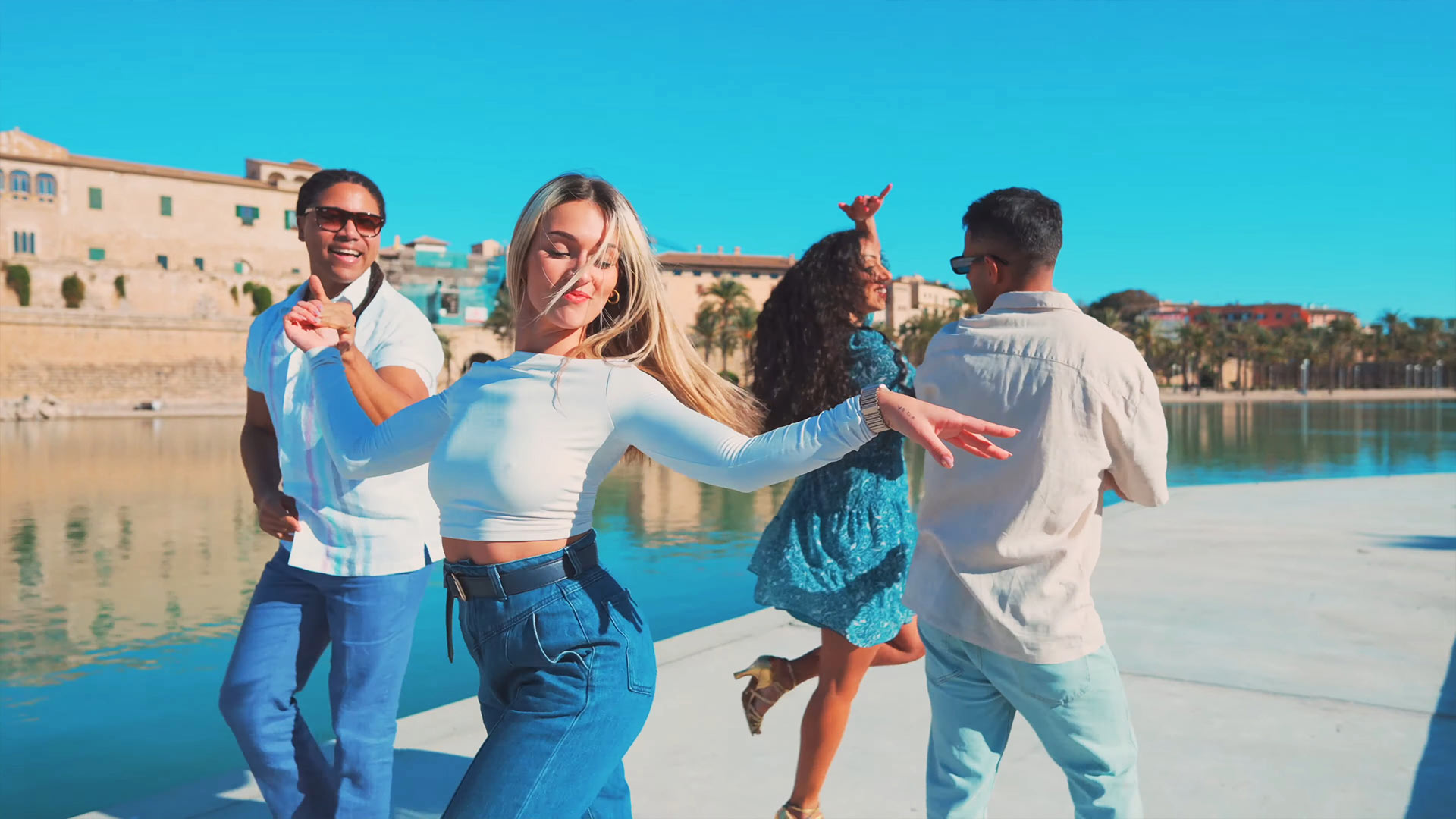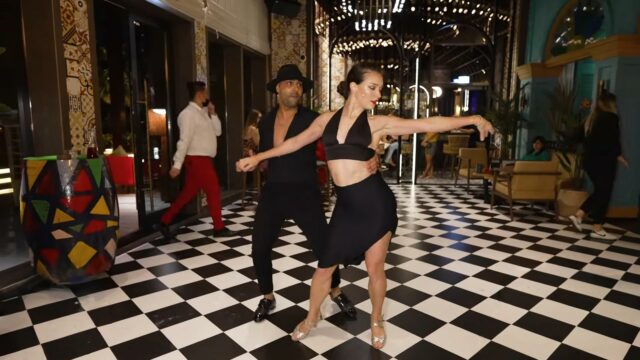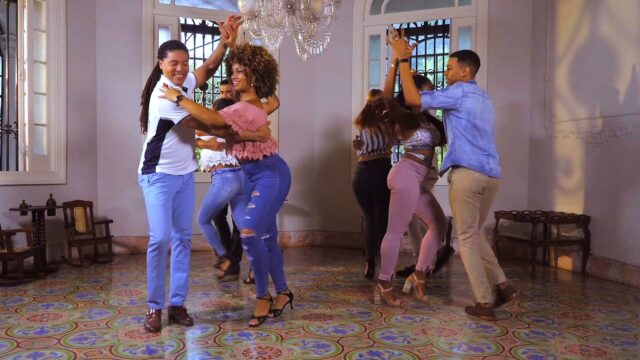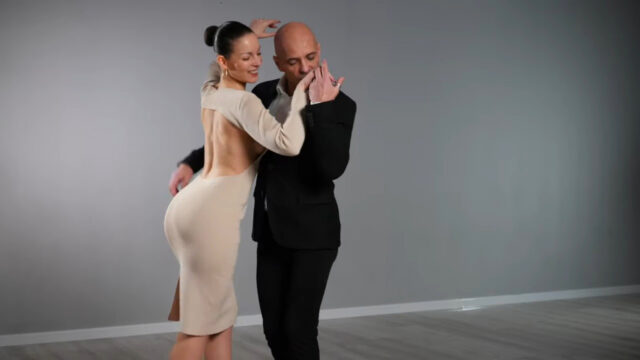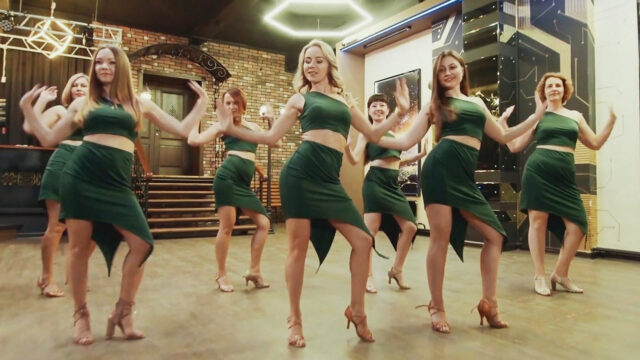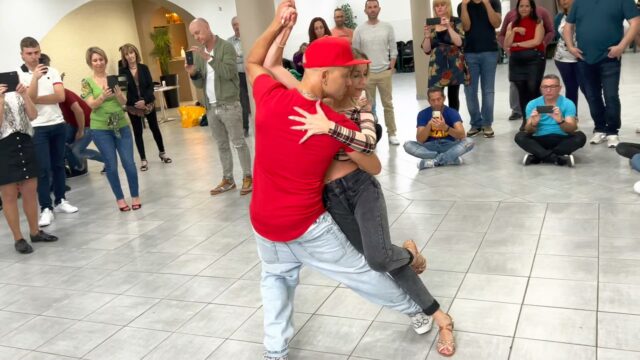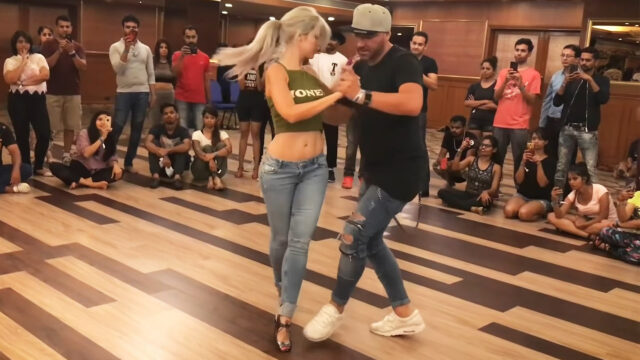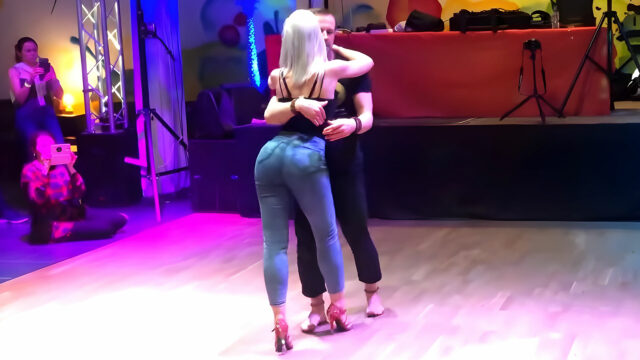Cuban salsa, also known as “salsa cubana” or “casino”, is a dance style that stands out from other forms of salsa with its circular footwork, Afro-Cuban body movements, and close connection to Cuban culture and traditions. It’s an energetic yet relaxed partner dance that’s all about feeling the rhythm of the music. Check out this video of Rita, Sandra, Ramses and Julio dancing Mallorca, Spain, and pay attention to the way they will start changing partner closer to the middle of video:
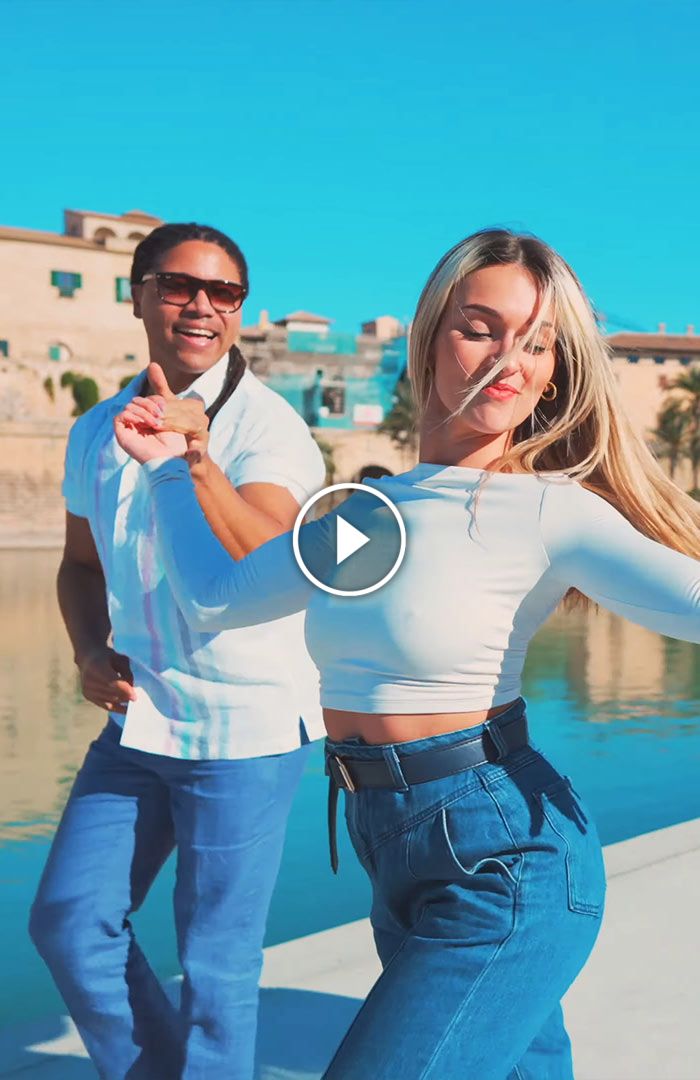
Cuban salsa is also frequently referred to as “salsa casino,” named after the dance halls in Cuba where salsa first emerged. Over time, asking someone to dance “casino-style” just became shortened to dancing “casino.” So if you hear Cuban salsa referred to as casino, now you know it’s referring to the same dance style!
- How Long Does It Take To Learn Salsa?
- How to Share Your Love of Dance With Friends
- The Elegant Mindset: How Feeling Worthy Transcends into Dancefloor Chic
Another common form of Cuban salsa is dancing “rueda de casino” (literally “casino wheel” in Spanish). Like in our today’s video “rueda” is a group dance in which couples form a circle and take turns dancing with multiple partners, with moves called out by a leader. So rueda incorporates many of the same footwork patterns and turns as Cuban salsa, just in a lively, constantly rotating group format.
So What Makes Cuban Salsa Unique?
There are a few key elements that distinguish Cuban salsa from other popular salsa styles like LA salsa and New York salsa:
- Circular Motion: Rather than dancing in a slot or line like LA/New York salsa, Cuban salsa partners move around each other in circles. They take turns chasing and being chased, making the dance feel organic and conversational.
- Simple Footwork: The footwork tends to be simple, with few complex turns or spins. The focus is more on feeling the rhythm and expressing it through fluid hips and shoulders.
- Afro-Cuban Influence: Cuban salsa incorporates movements from Afro-Cuban folkloric dances like rumba and draws on that rhythmic African heritage. Things like isolated hip motion, shoulder shimmies, and rhythmic bouncing are hallmarks of the style.
- Spontaneity & Improvisation: Cuban salsa champions musicality and expressing oneself in the moment to the rhythm of the music over learning defined routines. That makes it feel fresh and allows more individual personality to shine through.
- Relaxed Attitude: Cuban dancers typically have a laidback, cool attitude rather than an overly refined look. There’s an effortless playfulness and connection to the roots of the dance maintained.
So in summary, while other salsa styles value complex footwork and turn patterns, Cuban salsa focuses more on partner connection, musicality, and expressing the origins of the dance through a relaxed, circular style. I’ve been dancing Cuban Salsa for over 10 years and if you ask me, it’s the most fun Salsa style out there, nothing compares to Cuban Salsa music and the way it makes you feel and move, so let’s talk about it as well.
Dancing to Cuban Music
Cuban salsa is most authentically danced to Cuban Salsa music or Timba rather than the salsa typically associated with New York or Puerto Rico. Dancing to those island beats allows dancers to better feel the Afro-Cuban rhythms that shaped this style. Cuban Salsa music deserves hours and hours of listening and studying, it’s so versatile and rich you won’t believe it once you start paying attention to what you are dancing to.
Some famous Cuban Salsa artists and bands include:
- Alexander Abreu and Habana de Primera
- Maykel Blanco and Salsa Mayor
- Juan Formell and Los Van Van
- Elito Reve and Charangon
- Lazarito Valdés and Bamboleo
I highly recommend listening to their music and learning more about it, because it’s the whole new world of sounds and emotions. You’ll see what I mean when you’ll hear it.
Conclusion
With its circular footwork, Afro-Cuban body styling, and musicality, Cuban salsa offers a uniquely Cuban flavor that’s more relaxed yet rhythmically rich compared to other salsa styles. Its spontaneous lead and follow makes dancers feel truly connected to their partners and the music. Its close ties to Cuban culture give it a one-of-a-kind island vibe no other salsa can match. So if you want to experience authentic Cuban salsa, find a partner, turn up the timba beats, and let the rhythm move you!
If you enjoyed this article, feel free share it with your friends and let them know what you think about it. Also, consider checking out our most recent posts and stay in touch. Thank you!
